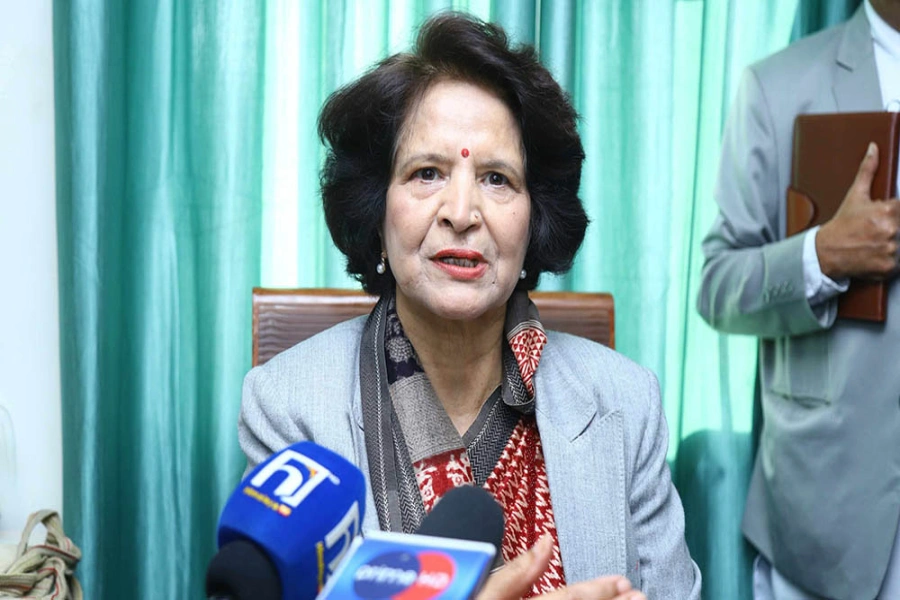The ideal ratio of public debt to GDP for Nepal is 35.43 percent: NRB
KATHMANDU, Sept 20: Nepal’s public debt has reached Rs 2.498 trillion with an additional government borrowing of Rs 104 billion in the past two months.
At a time when economists have been pointing out the country’s soaring public debt as alarming for the country, the government has been taking excessive loans without making any attempts to check its unproductive expenditure. With the ongoing economic slowdown, the government has been struggling to collect adequate revenue to meet its financial liabilities.
The records with the Public Debt Management Office (PDMO) show that the national debt as of mid-July, the end of the last fiscal year, stood at Rs 2.434 trillion. In the next two consecutive months of the current FY, the amount grew by Rs 41.11 billion and Rs 62.89 billion, respectively.
Nepal: Sliding Slowly into the Slippery Slope of Hyperinflation...

As of mid-September this year, the ratio of public debt to the country’s gross domestic product (GDP) has reached 43.79 percent. According to the government record, Nepal’s GDP currently stands at Rs 5.704 trillion.
The current ratio of public debt to GDP is the highest in the past 18 years. In FY 2005/06, this ratio was recorded at 49.52 percent. It was successively reduced to 22.28 percent in FY 2014/15.
The amount of public debt again started to escalate following the devastating earthquake that hit the country in 2015. In the last one decade, the figure has surged five-folds.
The country’s public debt to GDP ratio at present is way too high compared to the figure estimated by a number of researches conducted by the central bank. A research conducted by Nepal Rastra Bank (NRB) in May 2024 states that the ideal ratio of public debt to GDP for Nepal is 35.43 percent. Another research published in the NRB Economic Review in 2020 has also estimated the optimum public debt to GDP ratio for the country at 33 percent.
These researches have cautioned that excessive debt burden could lead to crowding out effects, increased tax rates and higher interest payment burden to the country along with exerting excessive pressure on future generations for repayments of loans. “Debt accumulation should closely correspond with the country's aims for sustainable economic development, emphasizing not just debt repayment but also the promotion of the highest possible level of growth attainable,” recommended these researches.
According to the PDMO, out of Rs 104 billion taken in public debt during mid-July and mid-September this year, Rs 90 billion was domestic borrowings and Rs 14 billion was external borrowings. In the review period, the government spent Rs 39.67 billion in debt financing, which included Rs 35 billion liabilities in domestic loans and Rs 4.67 billion in external loans.
In the current FY, the government has aimed to take Rs 330 billion in internal loans and Rs 217 billion in external loans.









_20200824121754.jpg)



























